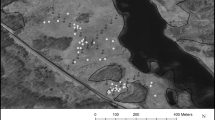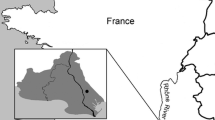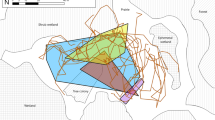Abstract
This paper reports on studies of the habitat requirements of Lycaena dispar batavus in its largest remaining site, the Weerribben National Park in the Netherlands. Observations and experiments were carried out to assess requirements for male territories, egg-laying sites and larval survival. The management of the fenland was also assessed on a landscape scale. Male territories were all situated in summer cut fen meadow. Eggs were laid on Rumex hydrolapathum in a range of habitat situations, although a preference was shown for plants on fen edges. Larval survival was highest on plants on watersides and fen edges, with no survival on plants in summer cut fen meadow. The findings are discussed in relation to whether the Broadland area in eastern England is suitable as a re-establishment site. Although many elements of the habitat mosaic are present, at the landscape scale there is insufficient open fenland and areas suitable for male territories are probably too isolated; however, a fen restoration strategy is in place which may restore suitable habitat and make re-establishment feasible in the future.
Similar content being viewed by others
Author information
Authors and Affiliations
Rights and permissions
About this article
Cite this article
Pullin , A.S. Habitat requirements of Lycaena dispar batavus and implications for re-establishment in England. Journal of Insect Conservation 1, 177–185 (1997). https://doi.org/10.1023/A:1018407831717
Issue Date:
DOI: https://doi.org/10.1023/A:1018407831717




